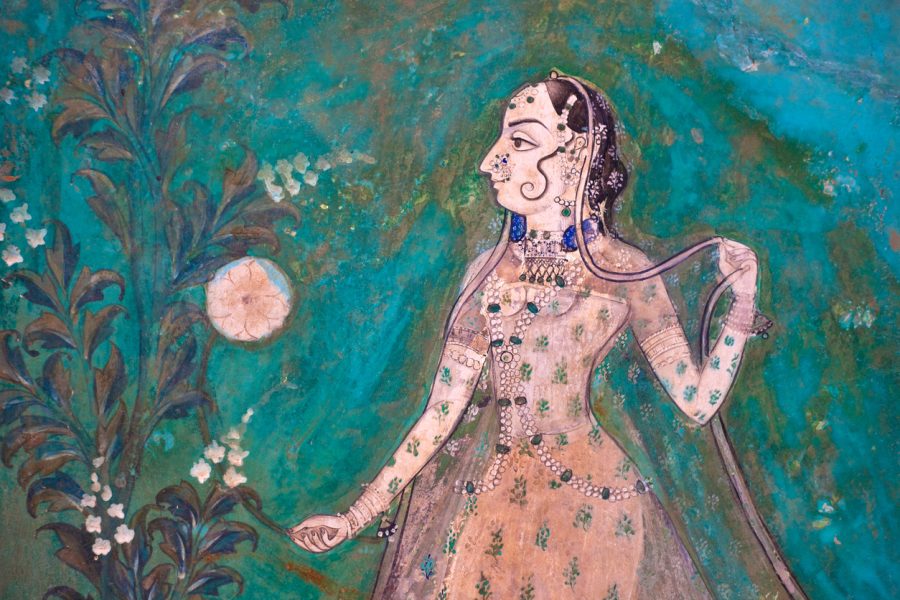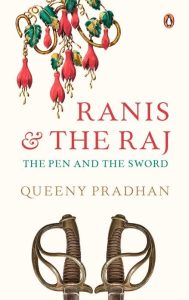
'Ranis and the Raj' review: India's subversive queens who fought the British
Queeny Pradhan's book is a path-breaking account of the lives of some of India’s queens who, despite their limitations, stood up to what was then the world’s most powerful and inhuman colonising force

Who hasn’t heard of the bravery of Maharani Lakshmi Bai of Jhansi? But, not many know that it was Rani Chennamma of Kittur in present day Karnataka, who had preceded her in resisting the interference of the East India Company officials with Indian traditions and laws. Both died different deaths while challenging British perfidy. Their heroics apart, the lives of both – like most Indian queens who took on the perennially cheating colonialists – still remain largely shrouded in mystery.

Scholar Queeny Pradhan has done a remarkable study of the turbulent lives the Ranis led in her book, Ranis and The Raj. Some are celebrated while others have been almost ignored by historians. The British may have presented themselves as the harbingers of civilisation, progress and modernity but they showed extreme patriarchal bias when it came to these queen regents.
The imperial records often referred to the queens as ‘rani’ or ‘maharani’ without even bothering to record their names. This is a challenge to historians today. The queens – the known and the largely unknown – operated within a patriarchal frame, yet they were subversive. This was a problem for the British, who were only keen to promote their commercial interests even at the cost of fairness, justice and elementary decency.
The Kittur principality may have supported the British in all their campaigns, particularly the last Anglo-Mysore War against Tipu Sultan. But, once the Kittur king died without an adult heir and Tipu Sultan was dead and gone, the East India Company refused to recognise the ruling family’s right to decide on the succession even though it had promised to do so in the past.
Also read: Book review: Why Agatha Christie spent her life pretending to be ordinary
Company officials were unscrupulous and ruthless as all they desired was wealth and territory. Kittur’s location on trade routes made it prosperous, with an annual revenue of about ₹350,000 – a huge sum then. The ruler even had his mint. When Kittur revolted, the English cracked down ruthlessly, killing thousands of people, civilians included, and rupturing livelihoods and families. It was sheer avarice. Chennamma died in prison on February 2, 1829.
Why queen of Jhansi turned against the British
The queen of Jhansi may not have taken up the sword if the English had recognised the adopted son of her husband, the king of Jhansi, after he died. She sent numerous representations, files and counter replies substantiated with documentary proof for each demand that the British raised. Having no real answers, they took refuge in technicalities and administrative obfuscations to deny her claim. It was then that Lakshmi Bai dropped the pen.
The East India Company excelled in signing treaties with Indian rulers but later broke the promises, culminating in treachery. And, anyone who stood up to the brazen injustice was branded evil – and dealt with without mercy. In the case of Jhansi too, the British wanted to directly control its annual revenue, amounting to a whopping ₹25 lakhs. The English befriended Jhansi when they faced threats from Peshwa or Maratha chieftains; but when that threat ended, Jhansi was cold-shouldered.
Once the mutiny of 1857 took place, the queen of Jhansi tried to maintain a fine balance between the demands of the revolting soldiers and the English authorities. According to author Pradhan, her decision to revolt was not based on anger or revenge but because the British did not respond to her distress calls, after Jhansi was attacked by Dutia and Tehree states. Once she decided to fight, Lakshmi Bai escaped from Jhansi thanks to Jhalkari Bai, her lookalike from a lower caste. She died on June 17, 1858 after her horse refused to leap over a canal and she was shot. Her body was burnt in a garden, the British recognising her as one of the bravest and best military leaders of the rebels.
Like in Kittur, the English reprisals in Jhansi were monstrous. The queen’s father was hanged over unproven links to the killings of English civilians in Jhansi. For the loss of 227 men while capturing the Jhansi fort, around 3,000 Indians were killed, including civilians. After committing mayhem for three long days, the English looted Jhansi of all gold, silver and precious stones. The late Maharaja’s library was destroyed with its rare and rich collection of Vedic and Puranic tests, sutras and treatises on Ayurvedic medicines. And the English claimed they gifted law and order to India! It was white terror at its worst.
Also read: Book review: ‘We, the People of the States of Bharat’ — How India negotiates its boundaries
But, unlike the nationalist and Marxist historians, Pradhan’s research makes her conclude in her book that queens like Chennamma or Lakshmi Bai were not motivated by feelings of nationalism. There was no nationalist consciousness in them. They fought for what they considered right for their principality, to ensure the succession of their sons and the continuation of their dynasties. Lakshmi Bai was herself reduced to penury by the time she revolted.
Pradhan is rightly harsh about the butchery the English carried out each time an Indian ruler revolted. Despite the fact that they projected themselves as civil people, the British were brutal in retaliation. In the imperial records, there is not a word of concern or remorse of the many ordinary men, women and children who died. Thousands were mercilessly massacred. The revolting rulers’ forts were razed to teach the colonized a lesson they will remember. No law was followed. Legal issues were not resolved in courtrooms but in battles.
The book – which also covers the struggles waged by Maharani Jindan of Punjab, – is a path- breaking account of the lives of some of India’s queens who, despite their many limitations, stood up to what was then the world’s most powerful and inhuman colonizing force. These queens were a contrast to the reactionary elements among the royalty who sided with the English in 1857 and earlier – and who got rewarded in return after the mutiny.
Ranis And The Raj: The Pen and the Sword
By Queeny Pradhan
Penguin Random House, pp 304, Rs 699

